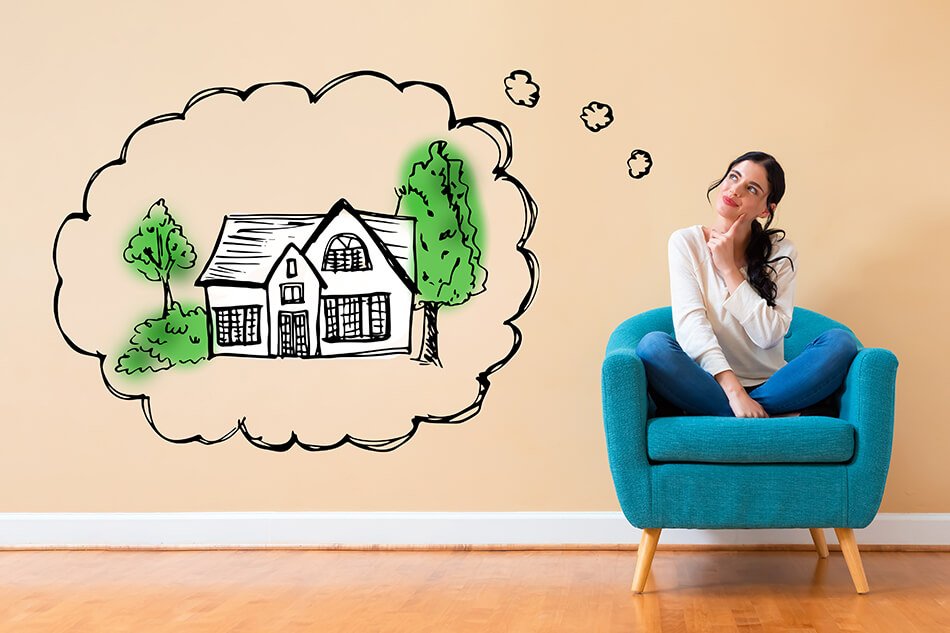If you’re living in Australia and currently deciding whether to take out a home loan, it’s essential to understand how the rising interest rate will affect mortgage availability and repayment costs.
Luckily, in this article, we’ll explore what the rest of 2023 has in store for your future home loan, including the current average mortgage costs.
What is Australia’s average mortgage size in 2023?
Australia’s house price surge has significantly affected the average mortgage cost since 2020, with home buyers facing a 24% cost rise in 2022 alone. Rising interest rates, thanks to the RBA cash rate, are pushing up monthly repayments meaning fewer Australians are stepping onto the property ladder out of fear of facing unaffordable mortgage repayments.
In November 2022, the average mortgage cost for owner-occupier homes was $601,797, up by a massive 36% since 2017. However, because of the rising interest rate in Australia, house prices are expected to decrease as fewer people enter the property market. In 2023, the average mortgage will therefore decline compared to 2022.
The most expensive areas to take out a mortgage include New South Wales (average house price of $769,000), Victoria (average house price of $619,000) and the Australian Capital Territory (average price of $586,000).
How have home loans changed over the past 12 months?
With the Royal Bank of Australia increasing the cash rate nine times over the past year and interest rates at a record high, more and more Australian homeowners are facing mortgage stress – when over 30% of their pre-tax income goes towards home loan repayments.
While many secured a competitive interest rate when interest was low with a fixed mortgage, over 800,000 owners are now facing the end of their fixed-term loans. They must find new ways to deal with dramatically increasing mortgage stress and high regular repayments.
Let’s look at an example:
Melissa bought her home in 2017 for $600,000 and secured a fixed mortgage rate of 4% for five years. Her monthly repayments were once $3,177 per month. Her fixed mortgage rates ended at the beginning of 2023. Because of the rising interest rate, her monthly repayments have increased by $699. Melissa now needs to pay $3,876 per month for the foreseeable future.
How much income is needed to pay off a mortgage?
The income you need to pay off your mortgage depends on your mortgage size. Generally, your repayments should be at most 30% of your salary (after tax). If you spend more than this every month, you’re putting yourself at risk of mortgage stress.
Let’s look at the average Australian income.
According to the Australian bureau of statistics, the average monthly income of full-time working adults is $7,230. So, ideally, the average Australian home loan should only cost up to $2,169. Anything over that would cause mortgage stress.
Of course, everyone’s own personal circumstances are different, and how you approach your debt obligations can vary. We’re mainly referring to a guiding principle here and suggesting that many Australians face a situation where their mortgage payments are putting considerable strain on their monthly expenditure.
Estimated monthly repayments on an average new home loan
The average new home loan in 2023 is currently $601,797, with the current interest home loan rate for a variable mortgage sitting at 5.61%.
If we take the average loan size to be $601,797 (though it’s predicted to decrease by the end of 2023), then your estimated monthly repayment would be $3,745 per month (for a 25-year mortgage).
This monthly repayment amount would cause significant financial strain for the average homeowner.
How long does it take to save for a deposit?
On average, it takes Australians between two and six years to save for a deposit, though this depends entirely on your circumstances as home buyers. This might change as deposits reach new highs and many buyers struggle to save enough disposable income.
With home loans skyrocketing, the average deposit size has grown to over $119,000 – an unattainable amount for many Australians.
Luckily, many mortgage lenders accept deposits of under 5% of the asking price, making it easier to step onto Australia’s property ladder.
How much can you save by refinancing?
Refinancing your mortgage can help you lower your monthly payments, reduce the interest rate on your loan, allow you to pay your loan faster, and use your home’s equity.
During the process, you replace your current loan with a new one offering competitive interest rates.
Let’s look at an example:
Fred bought his house in 2021 for $450,000 and took out a two-year fixed-rate mortgage at 6.5 %. With the fixed rate ending in 2023, Fred faces a soaring interest rate, making his monthly repayment unaffordable. Fred decides to refinance his home and secures a new variable interest rate of 4.8 %. While Fred’s previous monthly repayments were $3,048 per month, his monthly payments are now $2,588 per month after refinancing.
In total, Fred is saving $460 per month or $5,520 per year.
Considering refinancing? Choose Lendstreet.
If you’re interested in saving money on your mortgage, refinancing can lower your monthly payments and make your home loan more manageable.
At Lendstreet, we’re experts in finding the best refinancing deals to help you achieve your financial goals. Whether you’re looking to release equity. consolidate a loan, or switch to a better deal, we’re here to help.
Contact one of our professional mortgage brokers today for advice on refinancing.
FAQs
What is the average house price in New South Wales?
The average Australian mortgage price in New South Wales is typically around $1,130,500 for a residential home, making it the highest in the country.
How much does the average mortgage cost in Australia?
As of November 2022, the average mortgage cost for a variable-rate home loan is $601,797.
What is the current interest rate in Australia?
The current interest rate on an Australian home loan is 5.88 %. The RBA hiked the cash rate nine times through 2022.
Related articles
Key Takeaways: Lenders inform credit bureaus of your lending and repayments activities. Different credit reporting bureaus use different scale boundaries. ...
Did you know that it is often cheaper to build a house on vacant land, rather than buy established properties? ...
Did you know that over 67% of Australians own their own home? That is over 5.4 million homeowners across the ...









